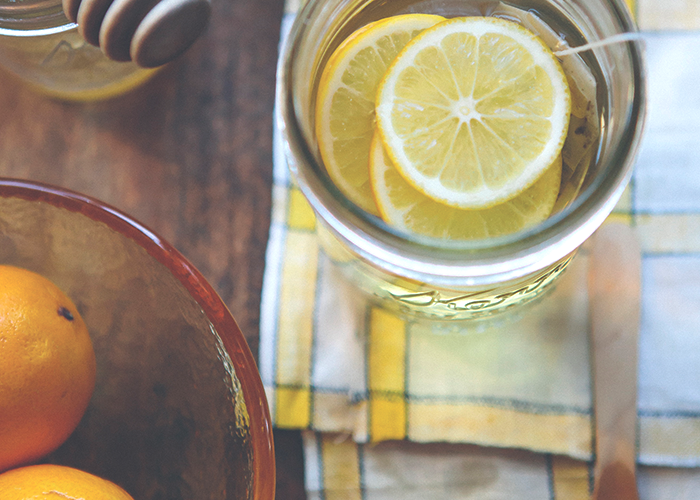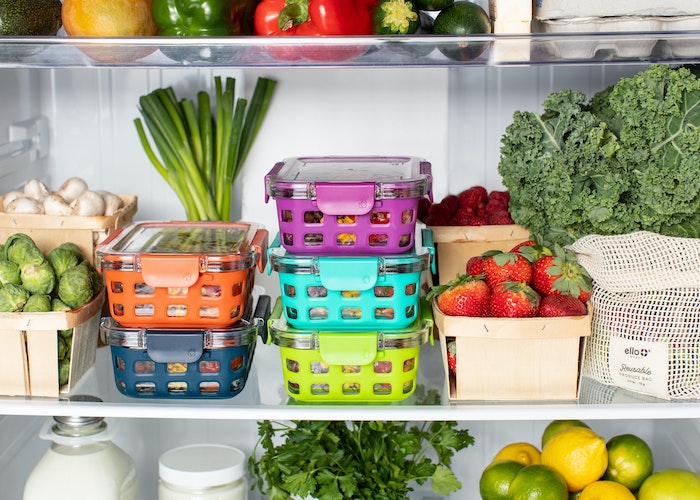How Much That New Year’s Cleanse Might Really Cost You
Like many millennial women my age, I’ve been entranced by the idea of the potion-like powers of juice cleanses, and while I’d like to explore it in an unbiased way, to be truthful, I tried a juice cleanse exactly once. I wanted to know what it was like – monetary cost and personal discomfort be damned! This is for me, I thought. Possibly for the betterment of my health, I thought. (OK, real talk, I was thinking about a better-looking me in pleather leggings and a crop top with sparkling hair; I was thinking expensive green juice in glass bottles and the supple sheen of faux-leather leggings would transform me into some kind of sexy rockstar goddess.) I thought I’d get a magical, healthy yoga glow minus the sweaty yoga mat. I pictured boundless energy and good lighting and the kind of fabulous inner peace that comes from taking care of yourself on a transcendental mind/body/spirit juice journey. This will be fun, I thought. This could be the path to inner happiness, I thought, as I cracked my first raw cold-pressed juice.
But the truth was, within mere hours my crumbling will power revealed a different inner truth: I was cranky. I was real cranky, as evidenced by the wide berth the boyfriend adroitly allowed me and the perplexed gaze from a dear friend I met that afternoon to browse the used bookstore with. Later that night I fairly melted into the couch until the boyfriend, wise beyond his years, passed me a fragrant bowl of spicy broth with rice noodles spiked with fresh herbs. Pho may not be a pretty brightly-hued elixir, but it surely has magical healing powers. I snuggled up with some X-Files and never tried a juice cleanse again.
But I’ve never gotten the idea totally out of my mind, either.
Recently, a juice bar opened up down the block from my house, an omen of things to come and a badge of the changes that’ve snuck into my neighborhood. This juice joint signifies A) the radical changes in the food culture of my neighborhood, which has the OG Nashville hot chicken spot Bolton’s Spicy Chicken & Fish about a mile down the road, B) changes in the wealth/spending habits of those who live here, and C) that the health concerns of millennials are driving the kinds of businesses that are thriving. We runnin’ this town, y’all. One of my housemates walked down the block to check it out, returning with a flyer for the business’s three-day juice cleanse. I couldn’t help it: I’d just survived a proper Southern Christmas Brunch — where every dish, regardless of other ingredients, was laden with Benton’s bacon, cheese, and butter– and suddenly the juice cleanse sounded appealing again.
THE EXPENSE
Some quick research around town turned up at least three juice bars offering cleanses, ranging one-three days in duration. Typically, you order your cleanse, which vary mostly on the length of the cleanse. The juice bar specially prepares your juices in individual servings and you pick them up. The cost of one day’s supply runs from $37-48, with a three-day cleanse costing over 130 bones! Ouch! My weekly grocery list costs less than that. If you break it down, figuring the juices serve as a meal replacement, you spend $12-16 per meal on a juice boutique cleanse. Is it financially sound to spend $12 on breakfast or lunch? Especially while trying to pay down student loans or save a down payment for your first digs? A cursory internet search turns up several companies offering to deliver premade juices for your cleanse to your door, with price tags often well over $200. If you walk into a juice bar instead, choosing a menu juice to order just to fast through breakfast or lunch, a 16 oz serving will cost you $6 and up, which may be a valid financial compromise.
The United States Department of Agriculture (USDA) offers averages for American grocery bills, with a female aged 19-50 averaging $38.20-76.20 per week, and males of the same age averaging $43.20-86.30 per week. So a typical three-day juice cleanse can cost as much as a seven-day grocery supply, with some costing as much as a month’s worth of groceries. After crunching numbers, it becomes apparent that a juice cleanse is something to plan for financially for the typical person, like a swank dinner out, or investing in a high-quality wardrobe staple.
THE HEALTH CLAIMS
The idea of holism, or holistic health, is gaining popularity recently. The holistic approach to health involves mental, spiritual, and social aspects of living, in tandem with the physical and scientific, in attempt to form a more comprehensive picture of health or wellbeing; one which is more than the sum of its parts. It seems that the philosophy behind juice cleanses falls into the holistic mindset, much like yoga or art therapy, for example. Juicing, or juice cleanses, can be seen as a type of fasting, or as meal replacement, or as a supplement to an existing diet. How you perceive juice cleanses may affect what kind of benefits you think you can reap from them. There are not a lot of studies out there to claim proof of health benefits of juice cleanses, or of intermittent, short-term fasting in general, but there are some articles to chew on.
Some people think a juice cleanse will help them reset their diets and manage their weight. Registered Dietitians were consulted for WebMD’s article on juice cleanses, and they warn that juicing is not a weight loss tool. Like many extreme diets, the restrictions, once lifted, may have the side effect of binging on less healthy foods. The problem with most diets is continued compliance, and being that juice cleanses can only be tolerated for so long, eventually old diets will be resumed and the weight will come back on.
Juice cleanses are also sometimes touted for detox purposes, for which there is no scientific basis. As NPR’s eating and health section The Salt reminds us, the body already has its own detox system: the liver, which detoxifies everything that comes into to body, and the kidneys, which filter and excrete the waste products. Unless you have liver or kidney disease, your body is already in a state of detoxification every minute of every day.
Finally, tons of folks turn to juice cleanses to feel better or support their health in a general way. The main issues with this stance are the same issues with any diet modification: making sure you are getting the right variety and amount of nutrients to keep your body running. This is where juice consumers still have to read food labels! Things to check for include sugar content (fruit inherently is high in sugar, but veggies less so) and caloric content (high sugar often translates to high calories, just like those tasty coffee drinks we’ve learned to eye warily), as well as protein and fiber content, both of which tend to be low in juices. A juice fortified with nut milk or yogurt (or another protein heavy-hitter), will help maintain important lean mass and muscle tone. A juice or smoothie with pulp or seeds like flax might provide the fiber needed to keep you feeling full and… regular.
These are important considerations to make when understanding the true healthfulness of a juice, or restricting any diet. While there’s some data to suggest that intermittent fasting can have health benefits like decreasing the risk of coronary heart disease, the American Journal of Clinical Nutrition reminds us that there’s simply not enough evidence to effectively prove specific health claims of different types and durations of fasting, including juice fasts.There are several ways to look at juice cleanses.
There are several ways to look at juice cleanses. Maybe one person will feel that short-term wellbeing glow and another person will only come away cranky and hungry, like I did. Maybe a boutique green juice will be just the thing to lift you from the holiday hangover or food coma. Some important wellness notes to take away, however, include being smart and informed about your budget as well as individual dietary needs, and always think for yourself! If our generation is changing the economic landscape with the nationwide success of juice bars, imagine what else we could be doing for our interests and health with our thoughtfully spent dollars. I, personally, think I’ll skip dropping my hard-earned dollars on a $270 juice cleanse and try a thrifty TFD green smoothie when I feel the need for a juice boost.
MORE THOUGHTS TO EXPLORE
1. The NY Times explores the hype and history of juice cleanses
2. An interesting NPR article on the famous Buchinger Fasting Clinic in Germany, where “fasting” doesn’t mean that you don’t get to eat.
References
1. http://www.cnpp.usda.gov/sites/default/files/CostofFoodNov2015.pdf
2. Fontana, Luigi, Dennis Villareal, Edward Weiss, Susan Racette, Karen Steger-May, Samuel Klein, and John Holoszy. “Calorie Restriction or Exercise: Effects on Coronary Heart Disease Risk Factors. A Randomized, Controlled Trial.” American Journal of Physiology – Endocrinology and Metabolism. 293, no. 1 (2007): E197-202.
3. Anderson, Jeffrey, Benjamin Horne, and Joseph Muhlestein. “Health Effects of Intermittent Fasting: Hormesis or Harm? A Systematic Review.”The American Journal of Clinical Nutrition. 102, no. 2 (2015): 464-70.
Keisha is a nurse in Nashville, TN. She likes sandwiches and seeing local bands in dive bars with her boyfriend, who sometimes wears t-shirts with his own face on them. She is on Instagram.
Image via Upsplash





